Armadillidium Klugii Pudding Isopods For Sale
$49.99 – $199.99
WE HAVE ARMADILLIDIUM KLUGII PUDDING ISOPODS FOR SALE HERE ARE SOME HIGHLIGHTS:
- Armadillidium klugii
- Captive Bred
- Mixed Sizes: Babies To Adults
- Adults Grow To About 15mm
- Excellent For Cleaners And Feeders
- Isopods Consume Waste And Decaying Matter To Keep Your Tank Clean
FUN FACTS!
- Fast Reproducing, Soft Bodied Invert
- These Will Reproduce Right Inside Your Set-Up Supplying A Sustainable Cleanup Crew For Your Animals
- Add These To Your Terrarium To Create A “Bio-Active” Set-Up
- Requiring Moderate To Low Humidity With Temperatures Of 75 – 100 Degrees
- One Of The Larger Species Of Isopods Great Food Source And Cleaners For Larger Sized Frogs And Lizards
Armadillidium Klugii Pudding Isopods
Armadillidium Klugii Pudding Isopods, commonly known as pudding isopods, belong to the family Armadillidiidae, a group of terrestrial crustaceans. Originating from the Adriatic coast, these isopods have garnered significant attention among entomologists and hobbyists alike. Their unique name, “pudding isopods,” is derived from their distinct, rounded appearance, resembling small, compact puddings. This distinctive morphology, along with their striking coloration and patterns, makes them a captivating subject of study and a popular choice in the pet trade.
Taxonomically, Armadillidium Klugii Pudding Isopods falls under the order Isopoda, which encompasses a wide variety of species found in diverse environmental settings. The genus Armadillidium Klugii Pudding Isopods is recognized for its ability to roll into a ball, a defensive behavior known as conglobation, which protects them from predators. This characteristic, coupled with their hard exoskeleton, provides an effective shield, contributing to their survival in various habitats.
The popularity of Armadillidium Klugii Pudding Isopods in the pet trade can be attributed to their manageable size, ease of care, and fascinating behavior. They have become a favorite among enthusiasts who appreciate their low maintenance requirements and the aesthetic appeal of their vibrant, often mottled exoskeletons. These Armadillidium Klugii Pudding Isopods exhibit a range of color morphs, including shades of orange, red, and yellow, often with intricate patterns of spots and stripes. This visual diversity not only enhances their allure but also provides insights into the genetic variability within the species.
In addition to their aesthetic and behavioral appeal, Armadillidium Klugii Pudding Isopods plays a vital role in their natural ecosystem. As detritivores, they contribute to the decomposition process by breaking down organic matter, thereby enriching the soil. This ecological function underscores the importance of their conservation, both in their native habitats and within captive breeding programs.
Physical Characteristics
Armadillidium Klugii Pudding Isopods, commonly known as the Pudding Isopod, exhibits a range of intriguing physical characteristics that contribute to its uniqueness among isopods. These terrestrial crustaceans typically measure between 18 to 20 millimeters in length, making them relatively small yet noticeable within their habitat.
Their coloration is one of the most striking features, displaying a palette that ranges from light gray to dark brown, often adorned with distinctive yellow spots or bands. This variegated pattern not only adds to their aesthetic appeal but also serves as a form of camouflage against predators.
Like other members of the Armadillidiidae family, Armadillidium Klugii Pudding Isopods has a segmented, oval-shaped body that is covered by a hard exoskeleton. This exoskeleton is divided into three primary sections: the head (cephalon), the thorax (pereon), and the abdomen (pleon). Each segment is articulated, allowing for flexibility and movement.
One of the most remarkable behaviors exhibited by the Armadillidium Klugii Pudding Isopods is its ability to roll into a ball, a defensive mechanism known as conglobation. This action is facilitated by the articulated segments of their exoskeleton, enabling them to protect their soft underparts from predators and environmental hazards. This trait is not only functional but also a distinctive characteristic that sets them apart from other isopod species.
In terms of sexual dimorphism, males and females of Armadillidium Klugii Pudding Isopods can be distinguished by subtle differences. Males generally possess slightly longer antennae and a more pronounced first pair of pleopods, which are appendages located on the underside of the abdomen. These features aid in the identification and differentiation of the sexes within the species.
Overall, the physical characteristics of Armadillidium Klugii Pudding Isopods are a fascinating blend of functionality and aesthetic uniqueness, making them a subject of interest for both scientists and enthusiasts alike.
Natural Habitat and Distribution
Armadillidium Klugii Pudding Isopods, commonly known as Pudding Isopods, have a specific natural habitat that greatly influences their survival and proliferation. These Armadillidium Klugii Pudding Isopods are primarily found in a variety of environments including forests, grasslands, and rocky areas. Forests provide a rich, moist environment with ample leaf litter and decaying wood that the isopods utilize for shelter and food. Grasslands, with their abundant ground cover, offer similar protective and nutritional resources. Rocky areas furnish crevices and under-rock spaces that serve as ideal hiding spots from predators and extreme weather conditions.
Geographically, Armadillidium Klugii Pudding Isopods are predominantly distributed across Southern and Central Europe, with a notable presence in the Balkans. Their adaptability allows them to inhabit a range of altitudes, from lowland regions to mountainous terrains. In each of these locations, the specific environmental conditions play a crucial role in their distribution. Armadillidium Klugii Pudding Isopods thrive in regions where humidity levels are moderately high, typically between 70% and 90%. These moisture levels are essential to prevent desiccation, as isopods have a permeable exoskeleton that makes them particularly sensitive to dry conditions.
Temperature is another critical factor for the habitat of Armadillidium Klugii Pudding Isopods. They prefer temperate climates with temperatures ranging from 15°C to 25°C. Extreme temperatures, either too cold or too hot, can significantly impact their activity and reproduction rates. In their natural habitats, these isopods are often found under stones, logs, and leaf litter, which provide not only physical protection but also microhabitats with favorable temperature and humidity conditions.
Understanding the natural habitat and distribution of Armadillidium Klugii Pudding Isopods is essential for anyone interested in studying or keeping these fascinating creatures. Their preference for specific environmental conditions underscores the importance of replicating these factors in captivity to ensure their health and well-being.
Diet and Feeding Habits
Armadillidium Klugii Pudding Isopods, commonly known as pudding isopods, exhibit dietary preferences that are both fascinating and vital to their ecological role. In their natural habitat, these isopods primarily feed on decaying plant matter, leaf litter, and various forms of organic debris. This decomposer diet places Armadillidium Klugii Pudding Isopods at a crucial point in the ecosystem, where they contribute significantly to nutrient cycling. By breaking down organic materials, they facilitate the release of essential nutrients back into the soil, promoting plant growth and maintaining soil health.
As part of their decomposing activities, pudding isopods consume a wide array of materials. Fallen leaves, rotting wood, and decayed plant stems constitute the bulk of their diet. These organic materials are rich in cellulose, which Armadillidium Klugii Pudding Isopods can digest efficiently thanks to the symbiotic bacteria in their gut. This relationship enables them to convert complex organic compounds into simpler substances, making them integral to the process of decomposition and nutrient recycling.
For those who keep Armadillidium Klugii Pudding Isopods as pets, replicating their natural diet is essential for their health and well-being. In a captive environment, these isopods can be fed a mixture of leaf litter, decaying wood, and other organic debris. Additionally, providing them with a steady supply of vegetables, such as zucchini or carrots, can ensure they receive the necessary nutrients. It is also advisable to include a source of calcium, such as cuttlebone or powdered calcium, to support their exoskeleton development.
In summary, the diet of Armadillidium Klugii Pudding Isopods not only supports their survival but also underscores their ecological importance. Their feeding habits help to maintain the balance of organic matter within ecosystems, making them indispensable decomposers. By understanding and catering to their dietary needs, whether in the wild or in captivity, we can appreciate and support the role of these intriguing creatures in our environment.
Behavior and Social Structure
Armadillidium Klugii Pudding Isopods, commonly known as pudding isopods, exhibit a range of intriguing behaviors and social interactions that reflect their adaptability and ecological roles. Predominantly nocturnal, these isopods are most active during the night, emerging from their burrows to forage for food. This nocturnal activity helps them avoid predators and harsh environmental conditions, such as extreme temperatures and desiccation.
In terms of social structure, pudding isopods demonstrate a fascinating level of organization within their colonies. Although not strictly hierarchical, there is evidence of cooperative behaviors, particularly in larger groups. These isopods often congregate in clusters, possibly as a strategy to retain moisture and enhance protection against predators. Such group behaviors also facilitate the sharing of resources and information related to food sources and safe hiding spots.
Burrowing is a significant aspect of their behavior, as Armadillidium Klugii Pudding Isopods are proficient diggers. Using their specialized legs, they excavate the soil to create intricate networks of tunnels and chambers. These burrows serve multiple purposes, including shelter from predators, a moist microhabitat to prevent dehydration, and a place to rear their young. The burrows also play a role in thermoregulation, helping the isopods maintain optimal body temperatures.
Hiding is another common behavior seen in Armadillidium Klugii Pudding Isopods. When threatened, they can roll into a tight ball, a defensive posture known as conglobation. This behavior not only protects their vulnerable underside but also makes them less appealing to predators due to their hardened exterior.
Communication among Armadillidium Klugii Pudding Isopods primarily occurs through chemical signals known as pheromones. These pheromones are used to mark territories, attract mates, and signal danger. Additionally, tactile communication is observed, where isopods use their antennae to interact with one another, reinforcing social bonds and facilitating group cohesion.
The combination of nocturnal activity, cooperative social structures, burrowing behaviors, defensive hiding techniques, and sophisticated communication methods highlights the complexity and adaptability of Armadillidium klugii in their natural habitats.
Reproduction and Life Cycle
The reproductive process of Armadillidium Klugii Pudding Isopods, commonly known as the Pudding Isopod, is a fascinating aspect of their biology. These isopods typically engage in mating rituals that involve a series of antennal and body movements, which are believed to be essential for mate recognition and selection. During courtship, the male will approach the female and use his antennae to tap and stroke her, signaling his intention to mate.
Once mating has occurred, the female undergoes a gestation period that usually lasts several weeks. During this time, the fertilized eggs are carried in a brood pouch known as the marsupium, located on the ventral side of her body. The marsupium provides a safe and nutrient-rich environment for the developing embryos.
After the gestation period, the female releases her young, known as mancae, which are miniature versions of the adults but lack fully developed pleopods. A typical brood can consist of 20 to 30 offspring, although this number can vary depending on environmental conditions and the health of the female.
The life cycle of Armadillidium klugii consists of several distinct stages: egg, manca, juvenile, and adult. Upon hatching from the egg, the mancae emerge and undergo a series of molts as they grow. Each molt marks a transition to a new developmental stage, during which the isopods increase in size and gradually develop more complex features. Juvenile isopods resemble adults but are smaller and less robust.
Notable changes in appearance and behavior occur as they mature. For instance, juveniles are typically more vulnerable to predators and environmental stresses, leading them to exhibit more cautious and reclusive behaviors. As they reach adulthood, their exoskeletons harden, and they become more active and resilient.
Understanding the reproductive and life cycle stages of Armadillidium klugii not only highlights their adaptability but also their intricate biological processes, which contribute to their survival and proliferation in various habitats.
Care and Maintenance in Captivity
Armadillidium klugii, commonly known as Pudding Isopods, make for intriguing and low-maintenance pets. To ensure their well-being in captivity, a thoughtfully planned enclosure setup is essential. A suitable enclosure for Pudding Isopods should be a well-ventilated container with secure lids to prevent escapes. A clear plastic or glass terrarium works well, allowing for easy observation and maintenance.
The substrate is a critical component of the habitat. A mix of organic soil, coconut fiber, and leaf litter provides a naturalistic base that supports their burrowing behavior. The substrate should be kept moist but not waterlogged, as excessive moisture can lead to mold growth and health issues. A humidity level of around 70-85% is ideal, which can be maintained by misting the enclosure lightly every few days.
Temperature is another important factor. Armadillidium klugii thrive in temperatures between 68-77°F (20-25°C). Consistent room temperature is generally sufficient, but during colder months, a gentle heat source may be required to maintain optimal conditions. Ensure the heat source does not dry out the enclosure or overheat the isopods.
Providing ample hiding places is crucial for the isopods’ sense of security. Pieces of cork bark, decayed wood, and leaf litter are excellent materials for creating shelters. These not only offer hiding spots but also contribute to a more natural and enriching environment.
Feeding Pudding Isopods is straightforward. They primarily consume decaying plant material, but can also be supplemented with vegetables, fruits, and specially formulated isopod food. Remove any uneaten food promptly to prevent mold and pest infestations. Regularly check for decomposing organic matter and replace it as necessary to maintain a clean environment.
Maintaining a healthy environment is paramount. Regularly clean the enclosure by removing feces and uneaten food. Monitor humidity and temperature levels consistently. Observing the isopods’ behavior can provide early indicators of health issues. If they appear sluggish or display discoloration, investigate changes in their environment or diet immediately.
By adhering to these guidelines, Armadillidium klugii can thrive in captivity, offering a fascinating glimpse into the world of these unique creatures.
Conservation and Ecological Importance
Armadillidium klugii, commonly known as the Pudding Isopod, plays a crucial role in maintaining ecological balance. These small yet remarkable creatures are efficient decomposers, breaking down organic matter such as leaf litter, dead plants, and other detritus. This decomposition process enriches the soil with essential nutrients, fostering plant growth and contributing to overall soil health. Their activities promote the recycling of nutrients within the ecosystem, ensuring that vital elements are continually made available to other organisms.
Beyond their role as decomposers, Armadillidium klugii also serves as an important food source for various predators, including birds, amphibians, and small mammals. Their presence in the food web underscores their ecological importance, as they help sustain the populations of these predators. This interconnectedness highlights the need to preserve their habitats to maintain biodiversity and ecosystem stability.
However, the populations of Armadillidium klugii are not without threats. Habitat loss due to urbanization, deforestation, and agricultural expansion poses significant challenges to their survival. Pollution, particularly from pesticides and chemical runoff, can also negatively impact their populations. Conservation concerns for these isopods necessitate a focus on protecting their natural habitats and mitigating harmful human activities.
Preserving the habitats of Armadillidium klugii is essential for maintaining their ecological roles. Efforts to conserve natural environments, such as forests and meadows where these isopods thrive, are crucial. Additionally, promoting sustainable practices in the pet trade can help reduce the pressure on wild populations. Responsible collection and breeding practices ensure that the demand for these fascinating creatures does not lead to overexploitation.
Overall, the ecological significance of Armadillidium klugii cannot be overstated. By understanding their role in the ecosystem and addressing conservation challenges, we can help preserve these valuable decomposers for future generations. The preservation of their natural habitats and the adoption of sustainable practices are vital steps in ensuring the continued health and diversity of our ecosystems.

| Option | 10 ct., 25 ct., 50 ct. |
|---|
Be the first to review “Armadillidium Klugii Pudding Isopods For Sale” Cancel reply
Related products
Isopods
Isopods
Isopods
Isopods

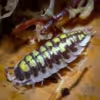
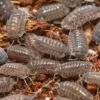

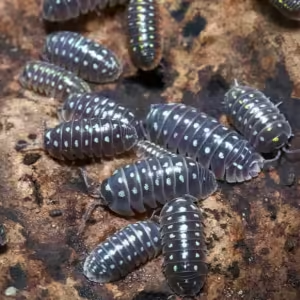

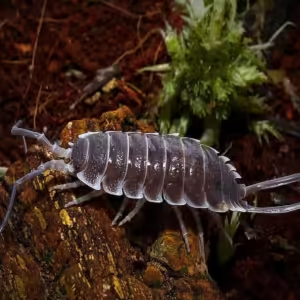

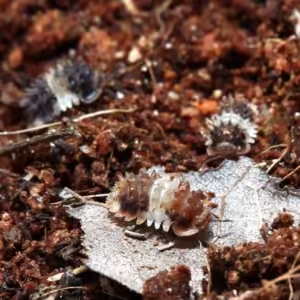

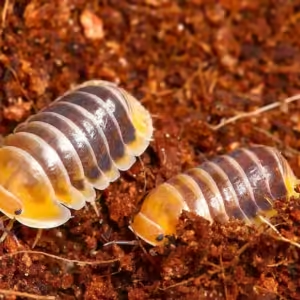



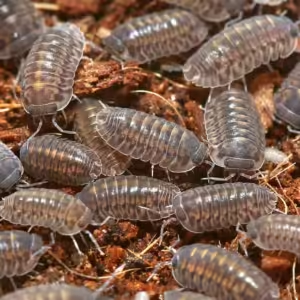

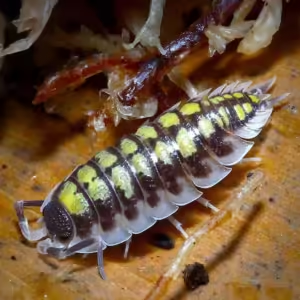
Reviews
There are no reviews yet.